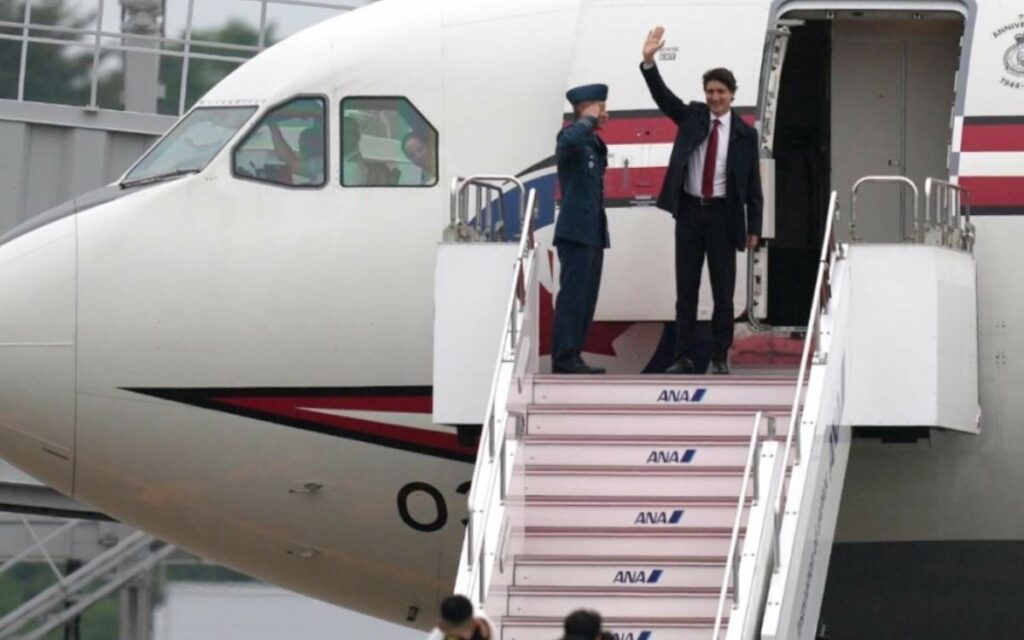
Prime Minister Justin Trudeau arrives for G7 summit on Thursday in Hiroshima, Japan, site of the world’s first atomic attack. Russia-Ukraine war and growing threat of China high on weekend’s agenda. Photo credit: AP/Louise Delmotte
An old boss once gave me a sage piece of advice: it’s not about what you say, it’s about how you make people feel. It’s a concept that underpins political communications, is a core tenant of advertising, and it’s why staff are always trying to control the visuals that will be depicted in the backdrop of the speeches of politicians.
Some of the most powerful stories that have come to light over the course of the last few years are ingrained in memory because they invoke an emotional response from the audience. During the early days of the pandemic, people were exposed to daily political messages from all levels of government, in a bid for politicians to appear open and transparent during a fluid situation where public policy decisions were changing by the week. The average person who consumes news would be hard-pressed to recall particular details of these announcements but could probably drum up an image in their memory of the Prime Minister outside of Rideau Cottage fielding questions from the media day in and day out.
When the 2021 election was called, it was against the backdrop of Afghanistan falling to the Taliban. A video of hundreds of people swarming a moving plane on a tarmac in Kabul in a desperate attempt to escape the country spread like wildfire on social media, and dominated domestic and international news coverage for weeks. As a rule of thumb, foreign affairs rarely dominate the news coverage of the day during an election campaign, but the deteriorating situation in Afghanistan put pressure on political parties to come up with a position on Afghan immigration targets in the aftermath of the Taliban takeover.
The last few years have been defined by global events that have repeatedly been defined as once in a generation, but with the World Health Organization declaring the pandemic as all but in the rear-view, the question remains whether we should look to the future with cautious optimism, or muted pragmatism.
If the location of the G7 leaders’ summit is any indication, there is more turbulence ahead. This weekend, world leaders gather in Hiroshima, Japan to talk about the ongoing war between Russia and Ukraine, the growing threat of China in the Indo-Pacific, and the state of the global economy. At the end of the weekend, a joint communique will be released committing the G7 countries to a series of initiatives that will look to address mutual points of interest related to security and economic concerns.
But the reality is that unless something sensational happens on the sidelines of the G7, the summit will come and go, and the news cycle will wrap within 24 hours of the leaders’ returning to their home base.
What should resonate with the public, however, is the symbolism of the G7 summit happening at the site of the world’s first atomic attack. The bomb – known as “Little Boy” – was dropped on Hiroshima on Aug. 6, 1945, and while the exact casualty count is still unknown to this day, it is estimated that upwards of 140,000 people were killed.
This is only the second time since World War II that a sitting U.S. president has stepped foot in the city and serves as a stark reminder that the cost of war comes at the expense of human lives.
Our political leaders are signalling that the future is uncertain, and there are storm clouds on the horizon. One can only hope that when we look back on this year’s G7 summit, it wasn’t a foreshadowing of things to come.

Josie Sabatino is a Senior Consultant at Summa Strategies, focused on providing strategic insight and helping clients meet their objectives in an ever changing and complex political and regulatory environment. Prior to joining Summa, Josie spent nearly a decade in political communications and most recently served as the Director of Communications to the Hon. Erin O’Toole, former Leader of the Official Opposition.




















